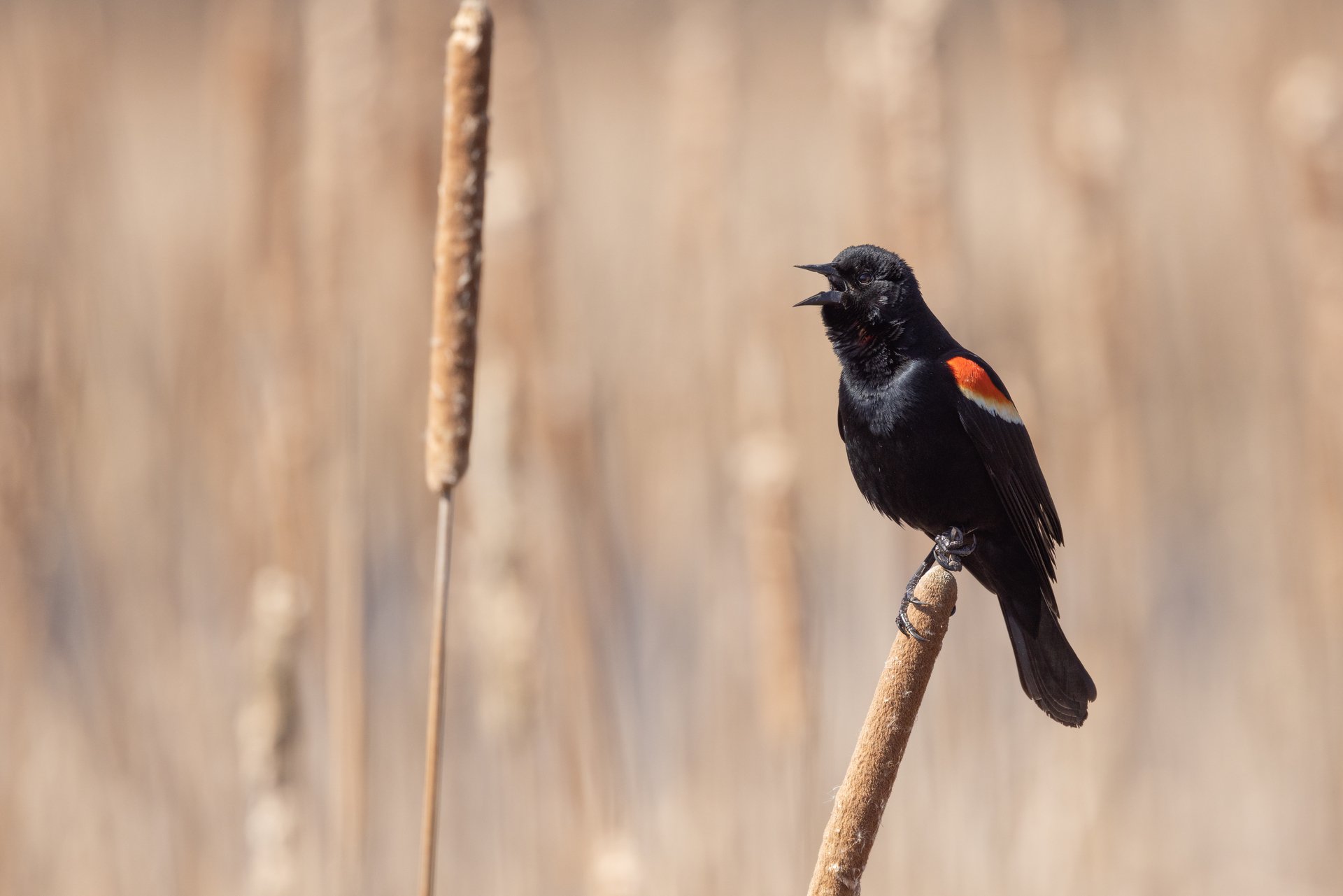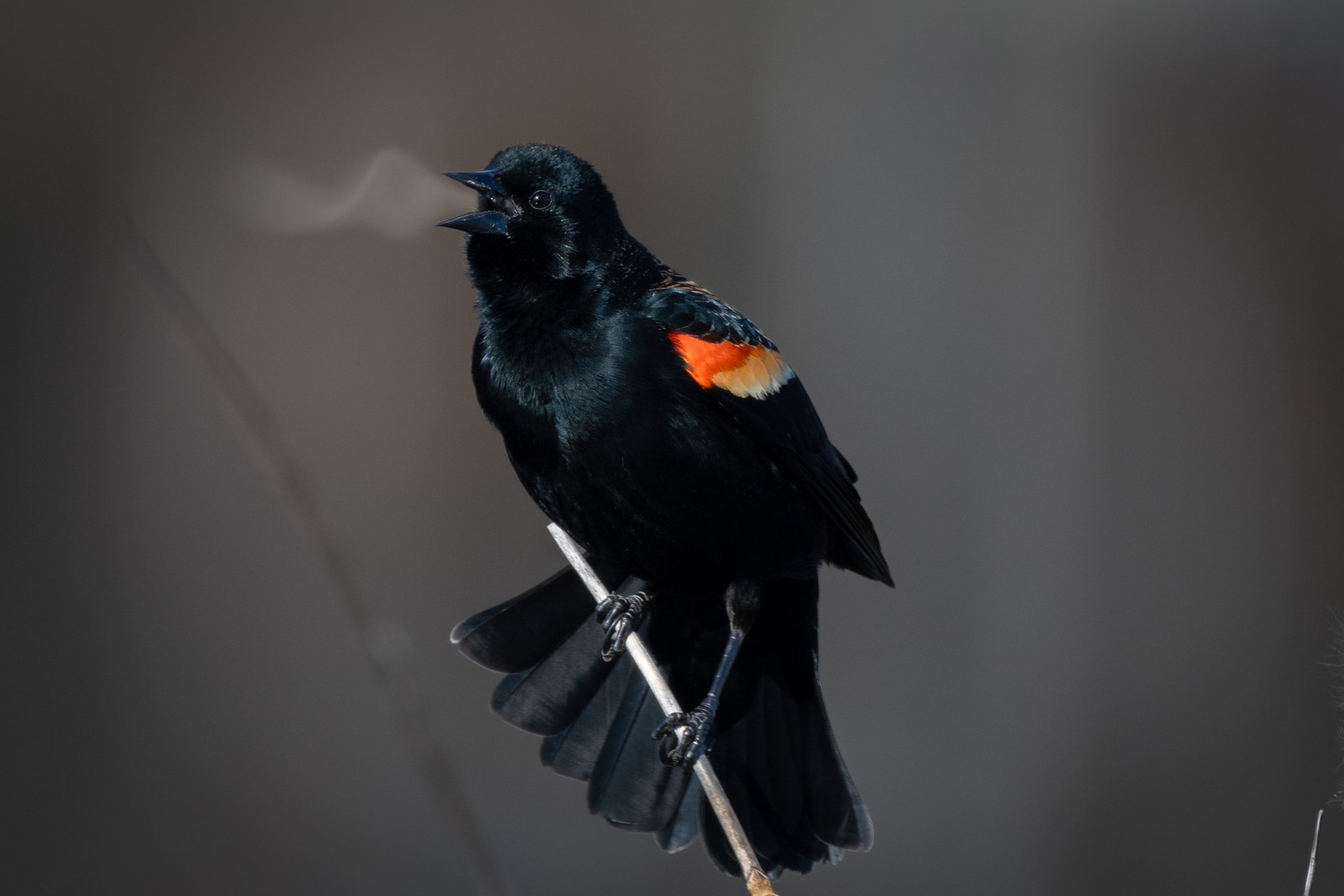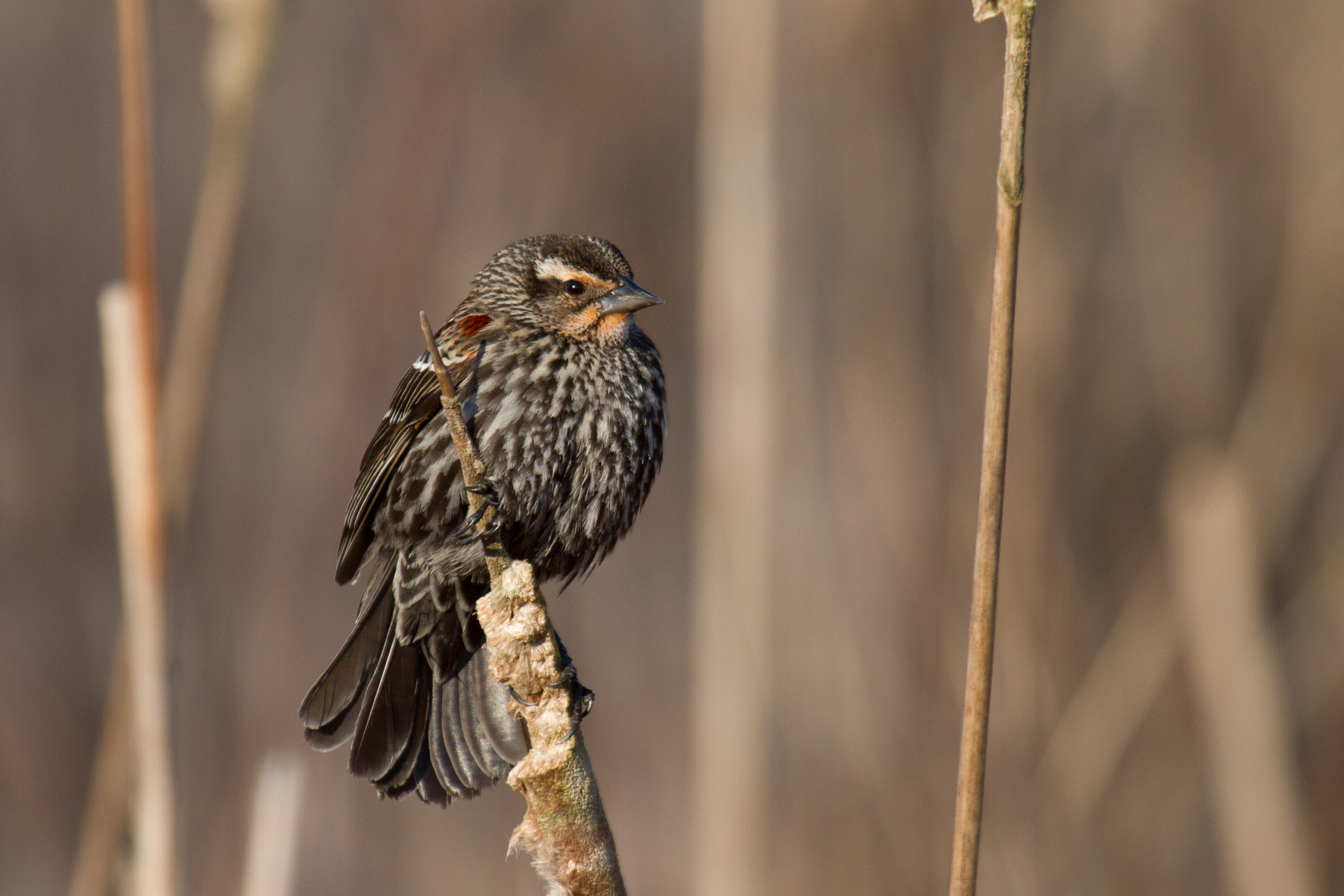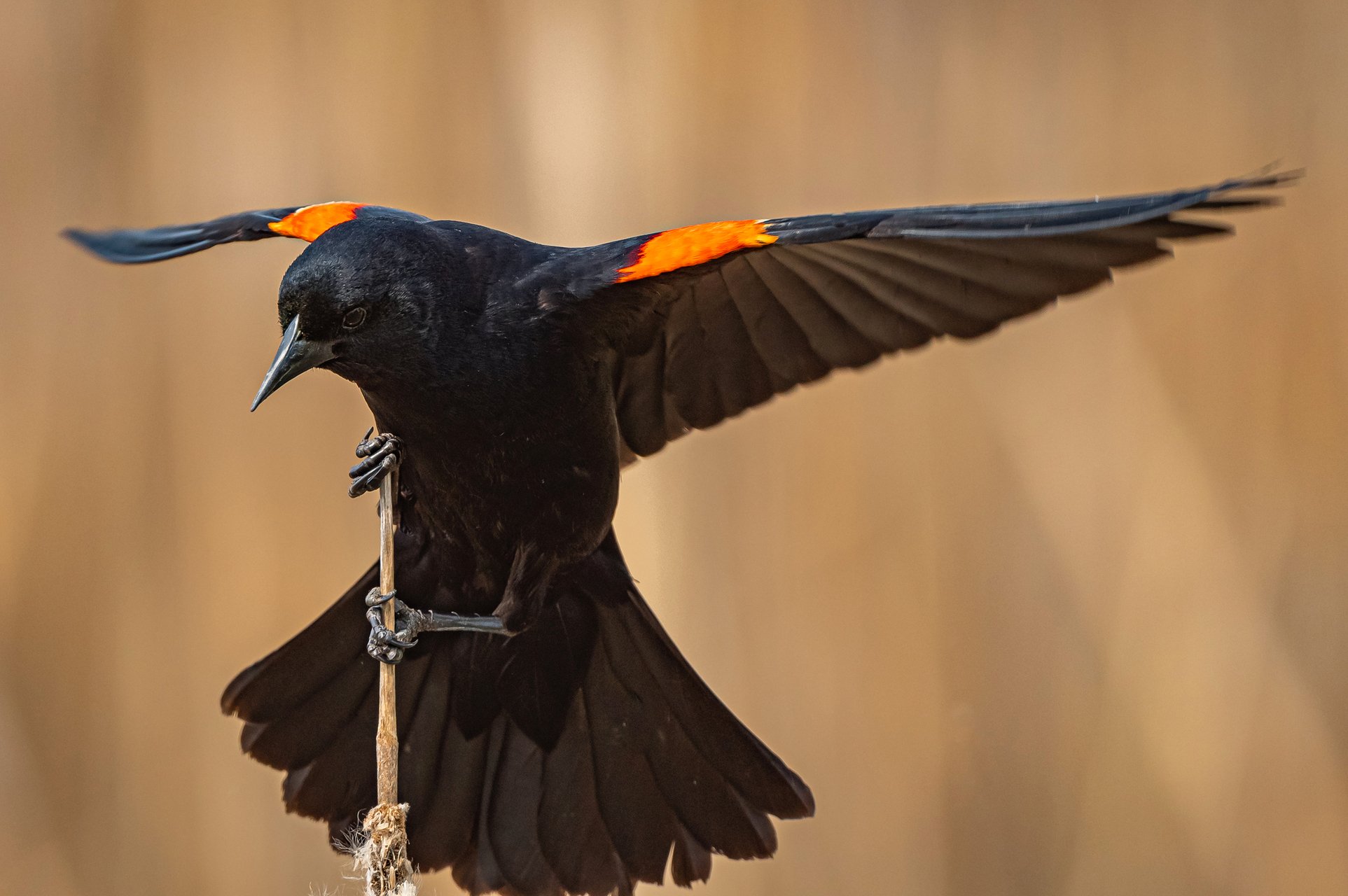Birds in Massachusetts
Red-winged Blackbirds
The most common and widespread members of the blackbird clan in Massachusetts are the Red-winged blackbirds. Their voices chorus around nearly every marsh and pond in the state during the spring and summer, and the vivid epaulets of the displaying males, make it clear where the bird’s name originated.
How to Identify Red-winged Blackbirds
Red-winged blackbirds are smaller than robins but larger than sparrows, coming in at just below 9” in length. Both sexes have sharp black bills, but their plumages are quite distinct.
Males are solid black with red shoulder patches. The shoulder patches are bordered with a line of yellow at the bottom, and the birds can conceal the shoulder patches when they wish, leaving only the thin line visible. Females resemble large sparrows but can be recognized as this species by their sharp bills, orange-washed faces, and heavy, regular streaking below.
Red-winged Blackbird Call
Red-winged Blackbird Status
Although they remain common and widespread as breeders in Massachusetts, there is evidence that red-winged blackbirds may be undergoing a decline in numbers. Interestingly, winter sightings of this species appear to be on the increase.
How Mass Audubon is Supporting Birds in Massachusetts
Mass Audubon works at our wildlife sanctuaries and beyond to ensure that the nature of Massachusetts continues to thrive. By scientifically monitoring Massachusetts birdlife, Mass Audubon informs important conservation decisions and launches targeted initiatives to help at-risk species. In addition, fostering healthy habitats, supporting native species, and educating people about the importance of nature conservation is critical to our success. Learn more about our work
How You Can Support Birds in Massachusetts
Mass Audubon supports birds like the Red-winged Blackbird every day, but we couldn’t do it without the support of our 160,000+ members.
Help support Red-winged Blackbirds, and birds like them, by becoming a member today.
Upcoming Bird Programs
See MoreRescue Raptors from Rodenticides
-
Online
-
Thursday, December 11
7:00-8:00pm
Adults & Families - 12 - 17
Owl Prowl
-
Felix Neck Wildlife Sanctuary, Edgartown
-
Friday, December 12
4:45-5:45pm
Adults & Families - 0 - 17
Winter Owl Prowl
-
Museum of American Bird Art Education Center, Canton
-
Friday, December 12
5:00-6:30pm
Families - children 5 - 17
Stay Connected
Don't miss a beat on all the ways you can get outdoors, celebrate nature, and get involved.






